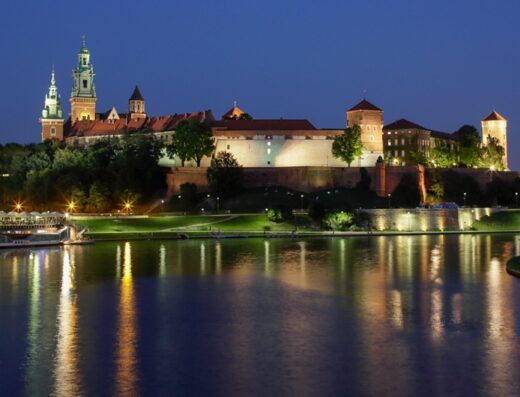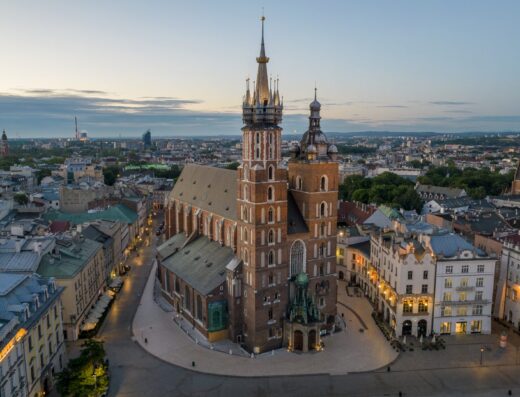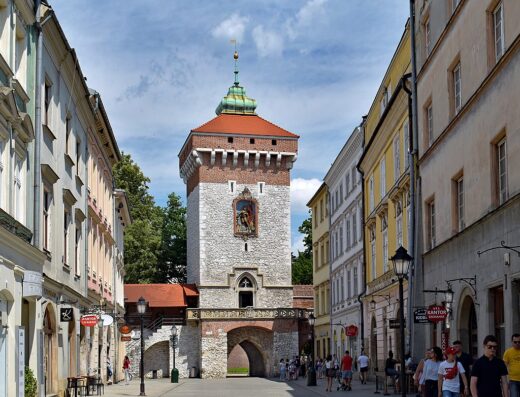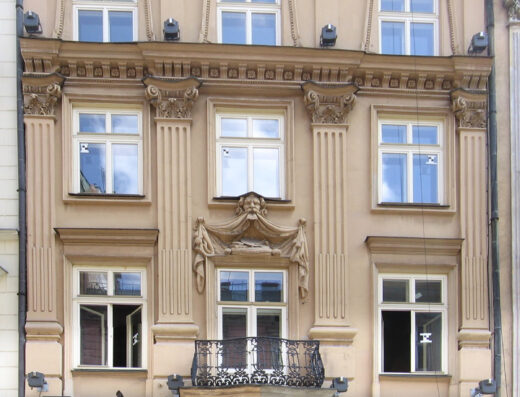Dragon’s Den, a Jurassic cave located within the Wawel Castle. This is a unique Polish scale, caused by water circulation or a side effect of karstification of Jurassic rock. Legend has it that the Wawel dragon lived there. The extraordinary interior of the cave hides mysterious rock depressions and crevices emanating mystery.
The total length of the dragon’s corridors is 276 meters, of which 81 meters are accessible to the tourist route. We reach the cave of the Wawel dragon in a neo-Gothic turret, located behind the Thieves’ Tower on the defensive wall of the Wawel castle from the Vistula side. The cave is illuminated and has three chambers along its route. At the beginning there are 135 winding paths leading to the first main chamber of the Wawel Dragon, from which comes the source of water for the needs of the inhabitants of Wawel Hill. The next chamber is covered with a brick dome and is the largest boundary in the dragon’s pit, while the last chamber has the most varied karst relief. The exit opening is at the Vistula bastion, at the foot of Wawel Hill. It is guarded by a sculpture of a fire-breathing Wawel dragon by Bronisław Chromy from 1972. A visit to the cave is one of the activities that will be of interest at the latest. When planning monitoring, remember that the temperature inside the cave is lower, it is worth having it outside it.
The remaining parts of the cave are available to tourists. They consist of two series of corridors: the first one starts near the exit and leads south towards the Wawel Dragon monument. To the second one, connected, available after the tunnel was pierced in 1974. It is an operating system of rooms and corridors with a siphon in the initial part. The peculiarity of the lake there is a rare crustacean – the Tatra water trout.
There are several legends about the mythical Holophagus (“all-eater”), as the dragon was called by the Krakow chronicler Wincenty Kadłubek. The dragon lived during the reign of the legendary ruler of the city of Krakus. According to Kadłubka dealt with the reptile by Krak’s sons by giving him sulfur when he was suffering from cattle disease (the dragon apparently demanded the existing supply of cattle and, not having satisfied his appetite, had a nasty habit of murdering the inhabitants of the surrounding area). Unfortunately, the later brother used the whole thing to sneakily murder the elder one (he blamed the dragon for this evil deed) and the first place in line to the throne. When the crime came to light, the next brother, then the ruler of Krakow, was exiled, and the throne was taken over by his sister Wanda, who did not want a German. Długosz then attributes the destruction of the basal reptile to Krakus, and from the end of the 16th century, the story is connected with the story of the shoemaker Skuba, the ancestor of the mighty Awdaniec family, and the slogan of trickery began to be made of structure and sulfur. Skuba was supposed to be rewarded with a coat of arms and nobility for killing a dragon





